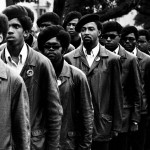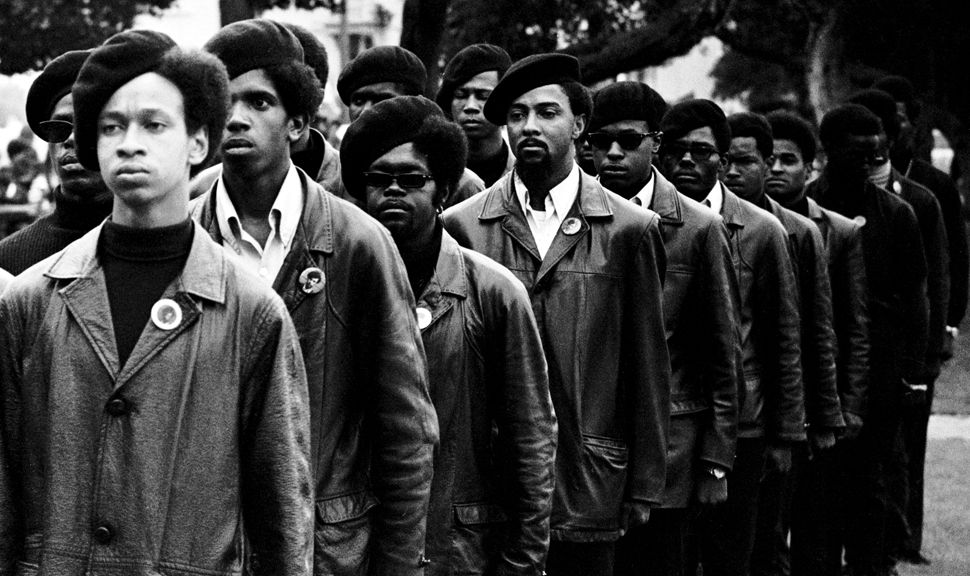
Some documentaries simply report history. Others try to rewrite it. “The Black Panthers: Vanguard of the Revolution” belongs to the latter group, and is better for it. Making its New York premiere on February 13 as the opening film of the Museum of Modern Art’s annual Documentary Fortnight festival, “Vanguard” sets out to move against the dominant narrative of the activist group as outrageous provocateurs, presenting to the audience, through vigorous archival research and extensive interviews with members and commentators, a different and more considerate way of thinking about the legacy of the Black Panthers and how it has affected the contemporary political landscape. Even at roughly two hours, there is no way a theatrically released film would be able to fit, …
Some documentaries simply report history. Others try to rewrite it. “The Black Panthers: Vanguard of the Revolution” belongs to the latter group, and is better for it. Making its New York premiere on February 13 as the opening film of the Museum of Modern Art’s annual Documentary Fortnight festival, “Vanguard” sets out to move against the dominant narrative of the activist group as outrageous provocateurs, presenting to the audience, through vigorous archival research and extensive interviews with members and commentators, a different and more considerate way of thinking about the legacy of the Black Panthers and how it has affected the contemporary political landscape.

Even at roughly two hours, there is no way a theatrically released film would be able to fit, in any meaningful way, the entire history of a group like the Black Panthers. There are many histories here, many stories to be told, and the group, especially due to its scattered emergence — although its base was undoubtedly the Bay Area — could easily serve as the subject to a fascinating, episodic documentary. But “Vanguard,” through the lens of director Stanley Nelson, has on its mind something more simple and effective — a process of demystification. For the Black Panthers, that means displaying the allure the group held through its style and swagger and projected violence, but also, though the experiences of those involved, documenting the undocumented — the community organizing and social programs, including massively successful food drives and neighborhood support centers that offered health services and catered to other needs.
This is not what we’re commonly told about the Black Panthers. We know about the guns, and the cops, and too many deaths. We know the slogans — “Free Huey” — and the rhetoric. But that’s only what was deemed newsworthy, and if the Black Panthers were truly successful at anything, it was in steering their public image in a million directions. Since there was no one image of the Black Panthers, the one that remains is the one that grabs the most attention.
Likewise, the same can be said for the group’s leaders. There are the ones we know, and the ones we don’t. Nelson puts a lot of focus on Fred Hampton, the Chicago-based organizer who joined the group and, for a time, represented a levelheaded vision for a second wave of Black Panther activity, working not just with poor African-Americans but reaching out to Puerto Rican and white groups with the idea of forming larger, stronger coalitions.
But like so many others, Hampton was the victim of vicious surveillance programs and, ultimately, one of the most blatant attacks by our government on an activist. Sleeping in his bed, his pregnant wife and friends in the next room, police broke down his door on the night of December 3, 1968, and fired two shots from close range into Hampton’s head. Later, it turned out that he had been asleep because his bodyguard, who was actually an FBI informant, had slipped a sleeping pill into his drink.
The Black Panthers were never the same after that. There were various attempts, some almost successful, to break into traditional politics. The group quieted down, focusing more heavily on its social programs as many of its original leaders spiraled into madness. It’s a depressing end, more of a long fade out than a sudden cut to black, and one that many saw coming. As a number of the people interviewed in the film attest, by the end of the 1970s, members began jumping ship. There was little semblance left of the group they once felt proud to be a part of and were even willing to die for.
What “Vanguard” lacks — and this might be simply due to a lack of time — is any discussion of the origins of the group. We are thrown right into its story so quickly, so powerfully, that we’re left with little understanding of where Black Power emerged from: there is very little about Malcolm X, no Martin Luther King, Jr., no SNCC, no Stokley Carmichael. Their work and ideas, over a number of years, laid the foundation for what would become the Black Panthers. (For a detailed history of this period, Peniel E. Joseph’s great book “Waitin’ for the Midnight Hour” is the place to start.)
There is also the role of women in the Black Panthers, which is touched on in “Vanguard,” but seems thin. Their participation, especially in later stages of the party, is important and under-documented, even deserving of its own film. But the truth is that there was widespread misogyny that persisted throughout the Black Panthers’ history, and it was a stain that hurt them. But we can still appreciate what they accomplished, while admitting that this was a predominately male group that had outdated views on the role of women in society. There were people inside the group, even some of its leaders, who fought against this, but it was still there, and it was real, and it needs to be explored more fully.
But here again we run into the problem that every film like “Vanguard” arrives at. There is no way to truly do justice to something so multifaceted, although Nelson does it better than others have before him. As Ericka Huggins, one-time member of the group, says in the film: “We were making history, and it wasn’t nice and clean. It wasn’t easy. It was complex.”
By Craig Hubert, BLOUIN ARTINFO
More of Today’s News from BLOUIN ARTINFO
The Revolution Was Televised: On the Legacy of “Black Journal”
Link to article:





















